Théo Tobiasse Title: C'est un train portant un parfum d'odalisque Signed and Numbered Dimensions: 57 x 76 cm Information : Edition of 175 Condition : Excellent Theo Tobiasse (born in 1927) Theo Tobiasse, master of the Paris School, was born in Jaffa, Israel in 1927 of Lithuanian parents. His father, a Zionist who was a printer by profession, had brought the family to Jaffa from Lithuania in 1925. Because of financial difficulties, the family returned to Lithuania when Tobiasse was still very young. However, by 1931 the family had settled in Paris. Tobiasse has never forgotten his first sight of Paris, the City of Light. During the Nazi occupation of Paris, the Tobiasse family lived hidden for two years in a minuscule apartment in Paris. From July, 1942 through August, 1944, the family never ventured outside, nor would they turn on the lights or burn candles. By the feeble light that filtered through the closed shutters, Theo spent his time reading, drawing, and playing chess with his father. The chessboard pattern seen in many of Theo’s paintings is symbolic of this time in his life. The only indication of time passing was the sound of Nazi boots in the streets and on the staircase of their house - more than once they were very close to being discovered. On August 25, 1944 Paris was liberated, and Theo walked out of the apartment with a large portfolio of drawings into the light of a cloudy day. It’s interesting to note that LeRoy Neiman was with the U.S. Army that liberated Paris that day! After the war Tobiasse worked for 15 years as a very successful advertising artist, first in Paris and then in Nice. He painted as often as he could during this time, often at night. In 1960 he entered his first art show and won the Grand Prize. Since 1961, Tobiasse has enjoyed incredible success as far afield as New York, Paris, Tel Aviv, Caracas and Tokyo, in all of which he has had one-man shows. Art Expo New York, the world’s largest art trade show, listed Tobiasse as one of the only Museum Quality artists represented when American Fine Art exhibited his works there in 1998. A sentimental and private individual, Tobiasse puts his innermost feelings into all of his works and his little “secret” into his original paintings: a personal message which he writes in Yiddish and then glues onto the canvas before painting or collageing over it. No one will ever know the message without destroying the painting itself! Tobiasse’s art is a product of intellect, submerged memories and laborious experimentation with various media. As Chagall and Picasso did before him, Tobiasse looks deeper into his work, seeking to express the inner world of man. Surrealism taught him to be experimental, to juxtapose pictorial elements in order to redefine them. He welcomes the new freedom of the 20th Century where there are no rules. Space can be twisted, altered, folded and rendered by its own reality. His influences are as diverse as the etchings on a teapot carried from Lithuania to the Winged Victory as it is set in the Louvre. He imitates no one, but has sensitively collected imagery which evolves into an art that is truly his. It is the brilliant vision of Theo Tobiasse, expressed in his work, that echoes the vocabulary of modern art.
Théo Tobiasse Titolo: C'est un train portant un parfum d'odalisque Firmato e numerato Dimensioni: 57 x 76 cm Informazioni: Edizione di 175 Condizione: Eccellente Theo Tobiasse (nato nel 1927) Theo Tobiasse, maestro della Scuola di Parigi, è nato a Jaffa, Israele nel 1927 da genitori lituani. Suo padre, un sionista di professione tipografo, aveva portato la famiglia a Jaffa dalla Lituania nel 1925. A causa di difficoltà finanziarie, la famiglia tornò in Lituania quando Tobiasse era ancora molto giovane. Tuttavia, nel 1931 la famiglia si era stabilita a Parigi. Tobiasse non ha mai dimenticato la sua prima vista di Parigi, la Città della Luce. Durante l'occupazione nazista di Parigi, la famiglia Tobiasse visse nascosta per due anni in un minuscolo appartamento a Parigi. Dal luglio 1942 all'agosto 1944, la famiglia non si avventurò mai fuori, né accese le luci o bruciò candele. Alla debole luce che filtrava dalle persiane chiuse, Theo passava il suo tempo leggendo, disegnando e giocando a scacchi con suo padre. Il motivo della scacchiera che si vede in molti dipinti di Theo è simbolico di questo periodo della sua vita. L'unica indicazione del tempo che passava era il suono degli stivali nazisti nelle strade e sulle scale della loro casa - più di una volta furono molto vicini ad essere scoperti. Il 25 agosto 1944 Parigi fu liberata, e Theo uscì dall'appartamento con un grande portfolio di disegni nella luce di una giornata nuvolosa. È interessante notare che LeRoy Neiman era con l'esercito americano che liberò Parigi quel giorno! Dopo la guerra Tobiasse lavorò per 15 anni come artista pubblicitario di grande successo, prima a Parigi e poi a Nizza. Durante questo periodo dipinse il più spesso possibile, spesso di notte. Nel 1960 partecipa alla sua prima mostra d'arte e vince il Gran Premio. Dal 1961, Tobiasse ha goduto di un incredibile successo fino a New York, Parigi, Tel Aviv, Caracas e Tokyo, in tutte le quali ha avuto mostre personali. Art Expo New York, la più grande fiera d'arte del mondo, ha elencato Tobiasse come uno degli unici artisti Museum Quality rappresentati quando American Fine Art ha esposto le sue opere nel 1998. Un individuo sentimentale e privato, Tobiasse mette i suoi sentimenti più intimi in tutte le sue opere e il suo piccolo "segreto" nei suoi dipinti originali: un messaggio personale che scrive in yiddish e poi incolla sulla tela prima di dipingere o collage sopra. Nessuno saprà mai il messaggio senza distruggere il dipinto stesso! L'arte di Tobiasse è un prodotto dell'intelletto, dei ricordi sommersi e della laboriosa sperimentazione di vari media. Come Chagall e Picasso prima di lui, Tobiasse guarda in profondità nel suo lavoro, cercando di esprimere il mondo interiore dell'uomo. Il surrealismo gli ha insegnato ad essere sperimentale, a giustapporre elementi pittorici per ridefinirli. Accoglie la nuova libertà del XX secolo dove non ci sono regole. Lo spazio può essere contorto, alterato, piegato e reso dalla sua stessa realtà. Le sue influenze sono diverse, come le incisioni su una teiera portata dalla Lituania o la Vittoria alata come si trova al Louvre. Non imita nessuno, ma ha raccolto con sensibilità delle immagini che si evolvono in un'arte che è veramente sua. È la visione brillante di Theo Tobiasse, espressa nella sua opera, che riecheggia il vocabolario dell'arte moderna.

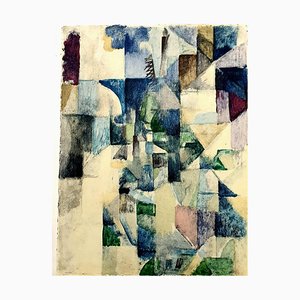
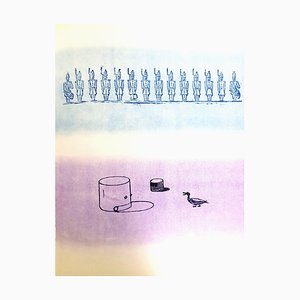
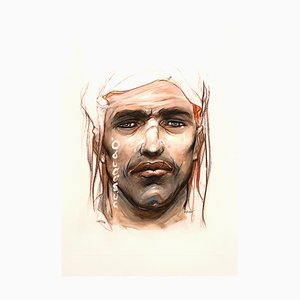
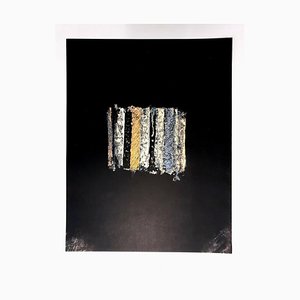
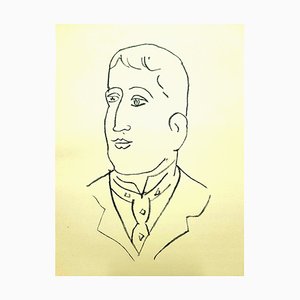

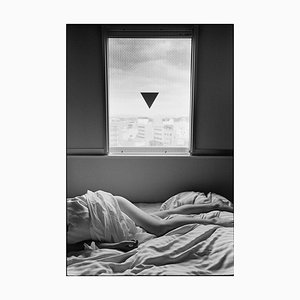
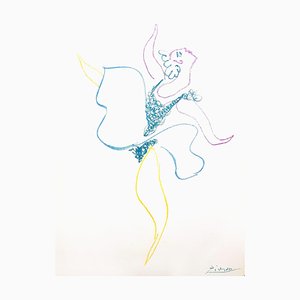
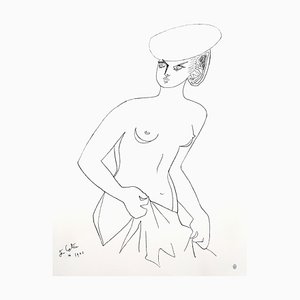
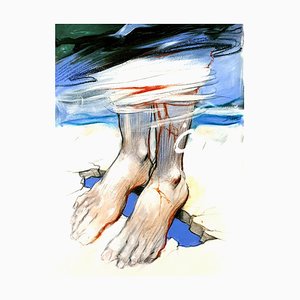
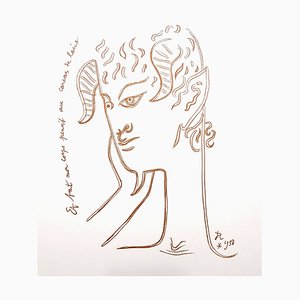
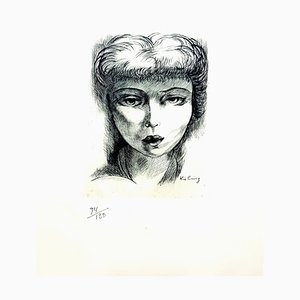
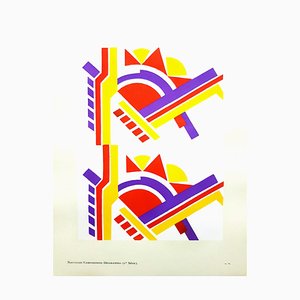
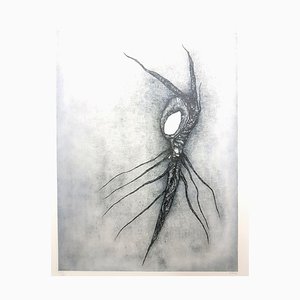
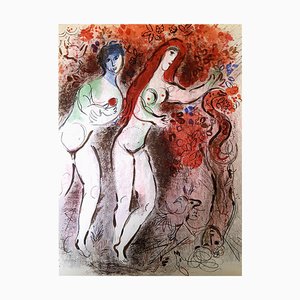

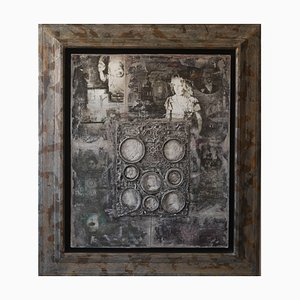
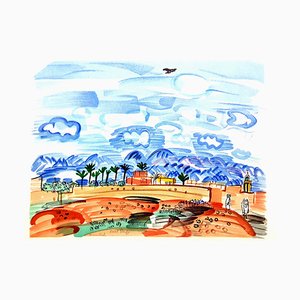
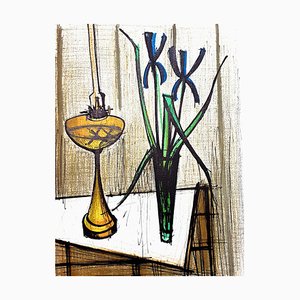
Contattaci
Fai un'offerta
Abbiamo notato che sei nuovo su Pamono!
Accetta i Termini e condizioni e l'Informativa sulla privacy
Contattaci
Fai un'offerta
Ci siamo quasi!
Per seguire la conversazione sulla piattaforma, si prega di completare la registrazione. Per procedere con la tua offerta sulla piattaforma, ti preghiamo di completare la registrazione.Successo
Grazie per la vostra richiesta, qualcuno del nostro team vi contatterà a breve.
Se sei un professionista del design, fai domanda qui per i vantaggi del Programma Commerciale di Pamono